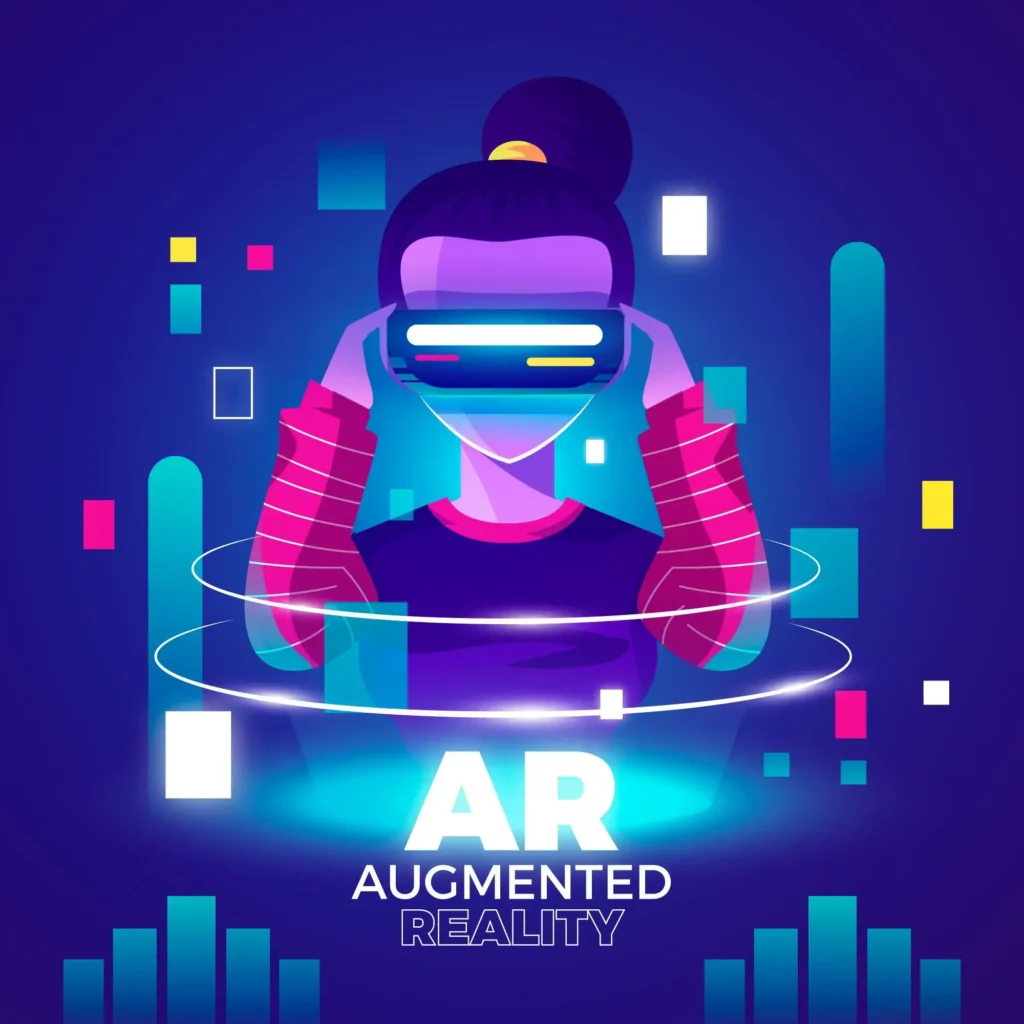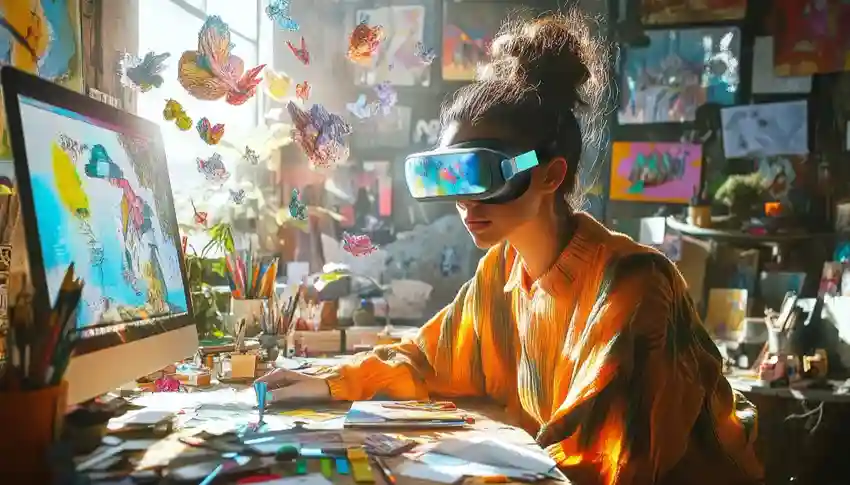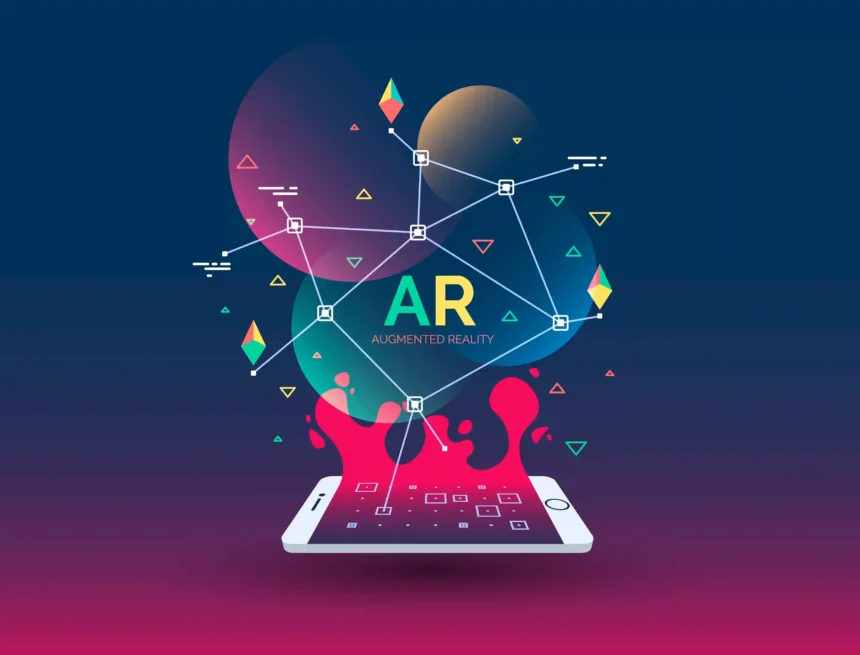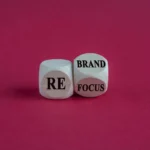Augmented reality (AR) is no longer just a futuristic gimmick—it’s a powerful design tool that’s changing how brands connect with audiences. Today, AR in graphic design is being used to turn flat, static visuals into rich, interactive stories that live in the real world. Whether you’re refreshing your brand identity or launching a new product, AR offers a new dimension of creativity where logos animate, packaging comes alive, and users can “try before they buy”—all through their smartphones or AR glasses.
As traditional branding tools fight for attention in a cluttered digital landscape, AR stands out by creating memorable, immersive experiences that leave a lasting impression. Brands like Sephora, Pizza Hut, and Louis Vuitton are already using AR to drive user engagement, increase conversions, and stand apart from the competition. And thanks to platforms like Adobe Aero and WebAR tools, even small design teams can experiment with AR without learning to code.
In this article, we’ll dive deep into how AR works in the context of branding and design. You’ll explore why it matters, how to design for AR step by step, the best tools to use, practical applications in packaging and retail, advanced performance tips, and even real-world case studies that prove it works. Plus, we’ll explore upcoming trends—like AI-powered AR and spatial computing—that are set to reshape the way we design brand experiences in the next few years.
Whether you’re a graphic designer, brand strategist, or business owner, this is your roadmap to understanding and using AR in graphic design to future-proof your brand.
1. Why AR Matters for Your Brand
Active Engagement Over Passive Viewing
Traditional branding relies on static logos, print ads, and product packaging. AR flips that script: instead of simply glancing at a logo or box, your audience interacts with it. They tap, rotate, explore, and share—and those actions create stronger memory traces than passive viewing ever could.Emotional Connection Through Immersion
When someone triggers an AR experience, they cross a threshold into a semi-magical world where your brand “comes alive.” That sense of wonder sparks positive feelings, and positive feelings transfer directly to your brand.Social Amplification
Interactive AR experiences are inherently social. People love showing off cool filters, 3D models, or animations on social media. Every share or story tag becomes free promotion for your brand.Data-Driven Iteration
Unlike static ads, AR experiences generate rich data—time spent, interaction patterns, most-clicked hotspots. You can use those insights to refine future campaigns, optimize messaging, and prove ROI to stakeholders.
2. Understanding Augmented Reality
2.1 What Is AR?
AR blends the physical world and digital content in real time. Using a camera-equipped device—such as a smartphone, tablet, or AR glasses—AR software identifies a real-world marker (like a QR code, logo, or specific shape) and overlays virtual elements—3D models, text, animations—on top of it.
2.2 How AR Differs from VR
AR enhances reality: You still see your environment, but with extra layers of digital information.
VR replaces reality: You immerse yourself in a completely virtual world, disconnected from your surroundings.
For branding, AR excels because it enriches real-world touchpoints (packaging, billboards, in-store displays) without requiring users to don a headset or download a separate app.
3. AR Design Workflow: From Idea to Launch

3.1 Concept & Storyboarding
Define your goal: Are you driving sales, educating users, or boosting brand awareness?
Map the user journey: Sketch how someone discovers the AR trigger (e.g., scanning a magazine ad), what they see (3D model, animation), and the final action (share on social, visit a landing page).
Storyboard key moments: Draw each interaction step so you can spot potential friction or confusion early.
3.2 Asset Creation
3D modeling: Use tools like Blender or Cinema 4D to build optimized 3D objects (keep polygons low and textures compressed).
2D graphics & animations: Prepare PNGs, JPGs, or video loops in Photoshop and After Effects for seamless integration.
Audio and voiceovers (optional): Record clear, concise narration or sound effects to enhance immersion.
3.3 AR Prototyping & Authoring
Drag-and-drop tools: Platforms like Adobe Aero let you import 2D and 3D assets, set triggers (e.g., image detection), and define interactions (tap, drag, rotate)—all without code.
Social AR: Spark AR Studio and Meta Reality Studio power Instagram and Facebook filters; you can publish branded face-filters or world-effects directly to billions of users.
Full-custom apps: Unity with AR Foundation provides maximum control for advanced experiences (environmental mapping, physics interactions), but it requires programming in C#.
3.4 Testing & Optimization
Cross-device preview: Test on a range of phones and tablets to catch performance hitches and layout issues.
Performance tuning: Bake lighting into textures, use level-of-detail (LOD) switching, and simplify shaders to keep frame rates smooth.
User testing: Invite a small group to try the experience; observe where they hesitate or confuse interactions, then refine accordingly.
3.5 Deployment & Analytics
WebAR: Deliver AR through a browser link—no app download required. Users click or scan a QR code, and your experience loads instantly.
Native apps & social lenses: Publish via the App Store, Google Play, or social platforms for deeper integrations (push notifications, advanced tracking).
Analytics setup: Instrument events for key actions (scan success, button taps, session length) to feed into Google Analytics or a custom dashboard. Use this data to iterate.
4. Key Applications of AR in Branding
4.1 Interactive Packaging
Product demos: Scan a cereal box to see animated ingredient breakdowns or recipe ideas in 3D.
Hidden stories: Unveil brand heritage videos or founder messages when users point their camera at your label.
Gamification: Embed mini-games that reward coupon codes or loyalty points upon completion.
Why it works: Packaging is everywhere. Adding an AR layer transforms shopping aisles into interactive playgrounds, making your product stand out on crowded shelves.
4.2 Experiential Retail
Virtual try-on: Let customers see how eyewear, makeup, or sneakers look on them before buying—right from a store kiosk or their own phone.
In-store wayfinding: Guide visitors through large retail spaces with AR arrows and overlays, highlighting special offers or new arrivals.
Pop-up events: Create location-based AR “landmarks” that animate only when users reach a specific store or event venue.
Why it works: Retail is no longer just about shelves; it’s about experiences. AR turns your physical space into a dynamic stage that delights and informs.
4.3 Outdoor & Out-of-Home (OOH) Advertising
Interactive billboards: Passersby scan a billboard with their phone to kick off a custom AR animation that links to your mobile site.
Landmarker experiences: Anchor digital sculptures or brand mascots to real-world landmarks—perfect for tourism and experiential marketing.
Why it works: OOH ads typically have seconds to catch attention. AR invites onlookers to spend minutes engaging, boosting brand recall exponentially.
5. Top AR Design Tools & Platforms
| Tool | Ease of Use | Best For |
|---|---|---|
| Adobe Aero | Beginner–Intermediate | No-code AR concepts; import Photoshop/Illustrator assets instantly |
| Unity + AR Foundation | Advanced | Fully customized AR apps; native iOS/Android builds |
| 8th Wall / Vossle | Beginner–Intermediate | WebAR campaigns; no-code deployment to browser |
| Blippar | Beginner–Intermediate | AR ads & packaging; robust analytics dashboard |
How to choose:
Speed & simplicity: Start with Adobe Aero or 8th Wall/Vossle to validate concepts quickly.
Social amplification: Use Spark AR for viral filters on Instagram and Facebook.
Full control: Opt for Unity + AR Foundation when you need complex interactions or custom logic.
6. Advanced Best Practices
6.1 Prioritize Clarity & Guidance
Single primary action: Focus the experience around one key interaction—too many options overwhelm.
Onboarding overlays: Display quick “how to use” hints that disappear after first use.
Visual affordances: Use subtle animations or glows to highlight tappable areas.
6.2 Optimize Performance
Polygon budgets: Aim for 30K–50K triangles per model on mobile AR to maintain 30+ fps.
Texture atlases: Combine multiple textures into a single atlas to reduce draw calls.
Baked vs. dynamic lighting: Bake static shadows into textures; reserve dynamic lighting for crucial effects only.
6.3 Maintain Brand Consistency
Color & typography: Import your exact brand colors and fonts into the AR authoring tool.
Voice & tone: Write any on-screen text or audio scripts in your brand’s distinct style.
Narrative structure: Treat the AR journey as a mini-story—hook, exploration, payoff, call to action.
6.4 Ensure Accessibility
Alternative content: Provide a non-AR fallback (2D video or carousel) for devices or users who can’t use AR.
Text contrast: Follow WCAG guidelines for any UI text or buttons overlaid on camera view.
Interaction options: Offer both tap and voice-command controls where platform support allows.
7. Real-World Case Studies
7.1 Pizza Hut’s Pac-Man Pizza Box
What happened: Pizza Hut turned its pizza boxes into AR Pac-Man games. Scanning the box launched a playable 3D Pac-Man arena where customers could chase ghosts over virtual pizza slices.
Results: More than 40% uplift in social shares; measurable increase in delivery app downloads; extensive press coverage.
7.2 Sephora Virtual Artist
What happened: Sephora’s app added a virtual try-on feature powered by face-mapping AR. Users could apply hundreds of lipstick shades and eyeshadow palettes in real time.
Results: 25% rise in online conversion rate; 10% decrease in product returns; high customer satisfaction scores.
7.3 Louis Vuitton x Yayoi Kusama Landmarker
What happened: LV partnered with an iconic artist to create AR art installations on landmark locations. Fans could unlock polka-dot overlays on famous monuments via Instagram.
Results: Thousands of user-generated posts; significant buzz in luxury and art publications; repositioned LV as an innovator at the intersection of art and fashion.
7.4 Ikea Place (WebAR)
What happened: Ikea launched a WebAR experience letting users drop true-to-scale 3D furniture models into their living rooms via a browser—no app download needed.
Results: 50% increase in time spent on product pages; measurable lift in add-to-cart events; strong PR for ease of use.
8. Common Challenges & How to Overcome Them
8.1 Device Fragmentation
Issue: Older phones or non-AR-capable devices can’t run advanced AR.
Solution: Offer a 360° viewer or video demo fallback. Clearly detect device capability and redirect accordingly.
8.2 User Permissions & Privacy
Issue: AR needs camera (and sometimes location) access, which can trigger user mistrust.
Solution: On first launch, present a transparent explanation page: “We need camera access to overlay AR content onto real surfaces. We do not store or share your video feed.”
8.3 Content Updates & Maintenance
Issue: Hard-coded AR assets require app updates for every minor change.
Solution: Host assets in a headless CMS or cloud storage. Your AR app or WebAR scene fetches the latest models and textures at runtime.
8.4 Performance vs. Fidelity Trade-off
Issue: Highly detailed models look amazing but can crash lower-end devices.
Solution: Use multi-tier LOD—serve a detailed model on high-end devices, and lower-poly versions on older phones.
9. Emerging Trends to Watch

9.1 AI-Powered Dynamic AR
By combining AR with real-time AI, brand assets can adapt to user preferences, surroundings, or even mood. Imagine a logo that subtly changes color based on local weather or a virtual mascot that uses your name and voice in greetings.
9.2 Browser-First WebAR
Advances in WebXR and WebGL are making browser AR nearly as powerful as native apps. This lowers barriers to entry—users simply tap a link or scan a QR code to start experiencing your brand in AR.
9.3 Spatial Computing & Wearables
Devices like Apple Vision Pro and other AR glasses will shift experiences from handheld screens to ambient, hands-free interactions. Brands that design for wearables will lead the next frontier of context-aware marketing.
10. Getting Started: Your AR Branding Checklist
Clarify Your Objective
Engagement? Education? Sales boost?
Define your key metric (time on scene, shares, click-through rate).
Choose the Right Platform
Quick prototype: Adobe Aero or 8th Wall.
Social buzz: Spark AR.
Full customization: Unity + AR Foundation.
Design for Usability
Keep interactions intuitive.
Provide clear onboarding.
Test on multiple devices.
Maintain Brand Consistency
Use your exact colors, fonts, and tone.
Structure the AR journey like a mini-story.
Plan for Accessibility & Fallbacks
Offer non-AR alternatives.
Ensure UI meets contrast and control-option standards.
Deploy & Measure
Launch as WebAR or app/social lens.
Track metrics, gather user feedback, and iterate rapidly.
Conclusion
Augmented reality is more than a novelty—it’s a powerful way to deepen engagement, tell richer stories, and differentiate your brand in an increasingly crowded marketplace. By following a clear workflow, leveraging the right tools, adhering to best practices, and planning for real-world constraints, you can create AR experiences that delight users and drive measurable business results. Embrace AR today, and you’ll be at the forefront of the next evolution in immersive branding.






